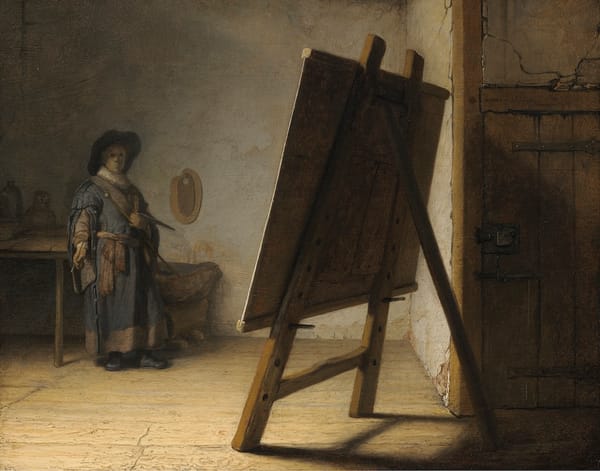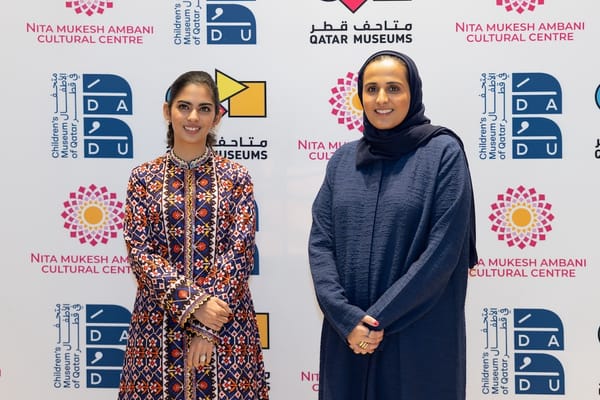How to Foster Critical Thinking Through Art
Art invites us to observe, interpret, and connect ideas, fostering critical thinking skills in young minds. By engaging with art, we learn to question assumptions, appreciate diverse perspectives, and approach complex issues with creativity and empathy.

Critical thinking is an essential skill in our complex world, where information flows constantly, opinions vary widely, and understanding often requires looking beyond the surface. Art, with its power to evoke emotion, provoke thought, and invite interpretation, can be a transformative medium for developing these skills. For young, curious minds, engaging with art offers a chance to refine observation, challenge assumptions, and think creatively—key elements of critical thinking. This article explores how art encourages critical thinking, with practical approaches for fostering this skill through observation, analysis, and discussion.
The Relationship Between Art and Critical Thinking
Art inherently challenges us to look, analyze, and interpret. Whether viewing a surreal landscape, an abstract form, or a realistic portrait, art opens up questions rather than providing simple answers. This is what makes it such a potent tool for critical thinking: each person can approach an artwork with a different perspective, question their interpretations, and reconsider initial assumptions.
Critical thinking is the ability to objectively analyze information, identify connections, and consider alternative viewpoints. It’s about understanding nuance and complexity—qualities that art often embodies. In an artwork, multiple layers of meaning can be hidden within colors, shapes, and textures. For a young and intelligent audience, this opportunity to “read between the lines” can encourage habits of deeper thinking and improve one’s ability to understand different viewpoints.
Observation: The Foundation of Critical Thinking
Art invites us to look closely, sometimes even at things we might overlook. Observation is the first step in fostering critical thinking because it encourages us to take note of details, patterns, and unexpected elements.
Engaging with Visual Details
When observing an artwork, especially for the first time, it’s natural to glance quickly and move on. However, taking the time to really look—to notice the texture of a brushstroke, the interplay of shadows and light, the subtle use of color—can help develop patience and a keen eye for detail. Learning to look closely without immediate judgment is a critical thinking habit that can transfer to other areas of life, like examining data, reading between the lines in news stories, or understanding social interactions.
A Practical Exercise in Observation
A simple but effective exercise for developing observational skills is the “5-Minute Rule”: spend five full minutes looking at a single piece of art without moving or looking away. Afterward, note down as many details as you can remember. What emotions did the colors evoke? How did the light affect the mood? What hidden elements became visible with prolonged attention? This exercise trains the mind to hold focus and notice detail—two essential skills in critical thinking.
Interpretation: Questioning and Analyzing Art’s Messages
Once observation is honed, the next step is interpretation. Interpretation involves questioning the “why” behind an artwork. Why did the artist choose this subject, this color palette, this composition? What themes or ideas are being conveyed?
Encouraging Multiple Perspectives
Art interpretation is seldom a one-answer activity. Different viewers bring their own experiences and biases, which influence how they see and interpret a work. By engaging in discussions with others about an artwork, young thinkers can see how different interpretations arise from different perspectives, which is key to developing empathy and understanding.
An excellent way to encourage diverse perspectives is to view art in groups and share interpretations afterward. Ask each person what they think the piece “means” and why. Through this dialogue, individuals not only learn to articulate their thoughts but also to listen to others’ viewpoints—a critical thinking skill essential for empathetic, open-minded thinking.
Looking for Context
Art does not exist in a vacuum. Many pieces are influenced by historical, social, political, or cultural contexts, and understanding these can provide richer insights. When looking at an artwork, considering the time period it was created in, the social issues of the era, and the artist’s personal history can lead to a deeper understanding of the piece.
For example, examining Picasso’s Guernica, a painting that famously depicts the horrors of war, gains a new layer of understanding when we know it was created in response to the bombing of Guernica during the Spanish Civil War. Young viewers can be encouraged to research the background of a piece, developing both research skills and an appreciation for the way context shapes meaning.
Emotional Engagement: Understanding and Reflecting on Reactions
Art often evokes strong emotions, and this emotional engagement can be a powerful tool for fostering critical thinking. By asking “Why does this make me feel this way?” viewers begin to analyze their emotional responses, recognizing that personal biases, past experiences, and subconscious beliefs shape their reactions.
Connecting Emotional Response to Critical Analysis
Teaching young people to examine their feelings about an artwork can deepen self-awareness and critical thinking. For instance, an unsettling feeling evoked by a particular piece may lead one to question what specifically causes discomfort. Is it the subject matter, the colors, the expressions? By identifying and examining these triggers, individuals learn to better understand their own responses and analyze their reactions more objectively.
One practical approach is to ask young thinkers to write down their emotional reactions to a piece, followed by the reasons behind those emotions. They might be surprised to discover hidden assumptions or subconscious feelings that shaped their interpretations. This awareness cultivates a more mindful, reflective approach to both art and personal experiences.
Synthesizing Ideas: Making Connections and Drawing Conclusions
Critical thinking doesn’t stop at analyzing individual elements of an artwork; it also involves synthesizing these observations to draw conclusions. What does the piece say about society, humanity, or existence? How does it connect to other pieces by the artist or to broader themes in the world?
Making Connections Across Disciplines
Art provides a unique opportunity to connect ideas across disciplines—history, psychology, politics, and even science. A painting from the Renaissance can be a gateway to discussions on anatomy, perspective, and scientific discovery, while modern art can lead to debates on technology and its impact on creativity.
Encourage young thinkers to connect the themes in an artwork to issues they see in the world. For example, how does Banksy’s street art critique capitalism or consumerism? What does Yayoi Kusama’s obsession with infinity say about mental health and self-identity? By drawing connections between art and real-world issues, students develop the ability to see larger patterns and relationships—a cornerstone of critical thinking.
Creativity and Critical Thinking: Solving Problems Through Art
Art is often associated with creativity, and critical thinking thrives when coupled with creative problem-solving. Asking young people to create their own art can reinforce critical thinking skills, as they work through problems, make choices, and reflect on the results.
Creating to Understand
Giving young people a chance to create art in response to a theme or idea requires them to think critically about how best to communicate their message. For instance, creating a collage around the theme of “freedom” forces students to consider what freedom means to them, how it can be represented visually, and which symbols best convey their thoughts.
Reflecting on their own creative process can help young thinkers understand the decisions and challenges artists face. This empathy for the artist’s perspective deepens appreciation and encourages analytical thinking.
Experimenting with Alternative Solutions
Art encourages experimentation, and not every attempt will succeed as planned. Through the process of trial and error, students learn resilience and flexibility—skills that are crucial for critical thinking in any context. When one artistic approach doesn’t work, they must rethink, rework, and refine, developing perseverance and the ability to approach problems from new angles.
Encouraging Dialogue and Debate Around Art
Art has long been a catalyst for discussion and debate, as it often addresses controversial or thought-provoking issues. By fostering open dialogue around art, young thinkers learn to engage in respectful debate, defend their interpretations, and listen to others’ viewpoints—important aspects of critical thinking.
Structured Debates on Artistic Meaning
Organizing structured debates on questions related to art can be a powerful way to cultivate critical thinking. A question like, “Should art always have a clear message?” invites students to consider multiple viewpoints. Some may argue that ambiguity is essential, while others may believe clarity is more impactful. By defending their positions and listening to opposing arguments, students develop analytical skills, learn to respect diverse perspectives, and practice articulating their thoughts.
Conclusion
Engaging with art is a powerful way to foster critical thinking in young, intelligent minds. From close observation to emotional introspection, from connecting historical contexts to creating original pieces, the world of art offers countless opportunities to develop the essential skills of analysis, empathy, and reflection. These skills don’t just improve one’s understanding of art—they are valuable tools for navigating life’s complexities and making informed, thoughtful decisions. As young people explore art with curiosity and openness, they cultivate a mindset that values depth, reflection, and understanding—a mindset that will serve them in any field they choose to pursue.





